Easy to recognize, the staghorn sumac makes excellent lemonade and tea.
Text and photos by Christopher Nyerges
NAME: STAGHORN SUMAC (Rhus typhina)
SUMAC FAMILY (ANACARDIACEAE)
There are 850 species of Rhus worldwide. In North America, there are three closely related species, all of which look similar and all of which can be used similarly as described in this article: R. typhina, widespread and common in the Northeastern states; R. glabra, or smooth sumac, widespread throughout southern Canada and much of the lower 48 U.S. states; and R. copallinum, or winged sumac, most common in the southeastern United States.
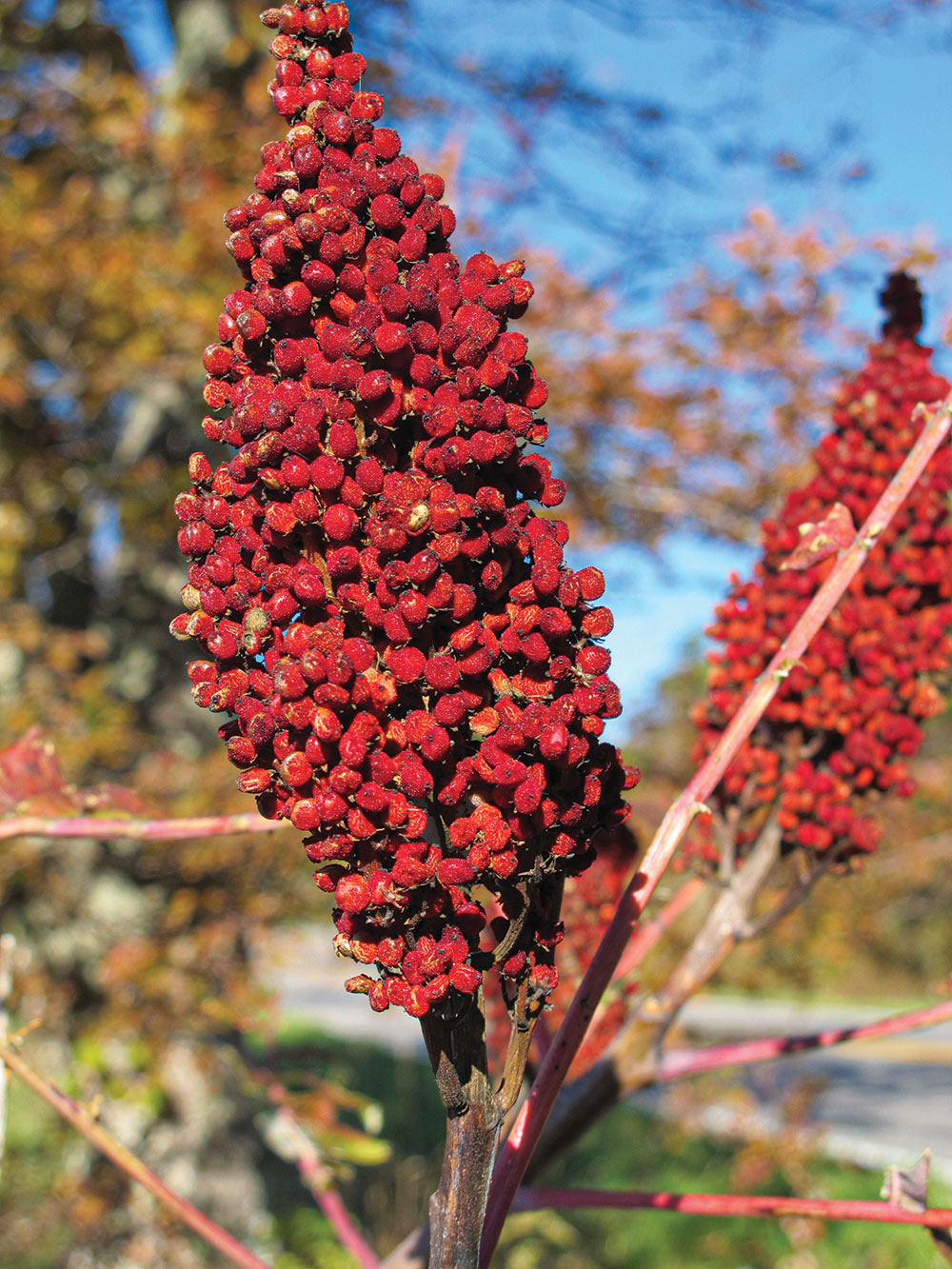
DESCRIPTION
Staghorn sumac is native to eastern North America. It’s primarily found in southeastern Canada, the northeastern and Midwestern United States and the Appalachian Mountains. It’s commonly cultivated as an ornamental.
This plant is easiest to recognize when its conspicuous fruit is present in the fall; it sits like a red cardinal in the tree. The shape of the fruit, a cluster of the seeds, has been described as torch-like and about 8 inches long. The individual seeds are red and covered in hair.
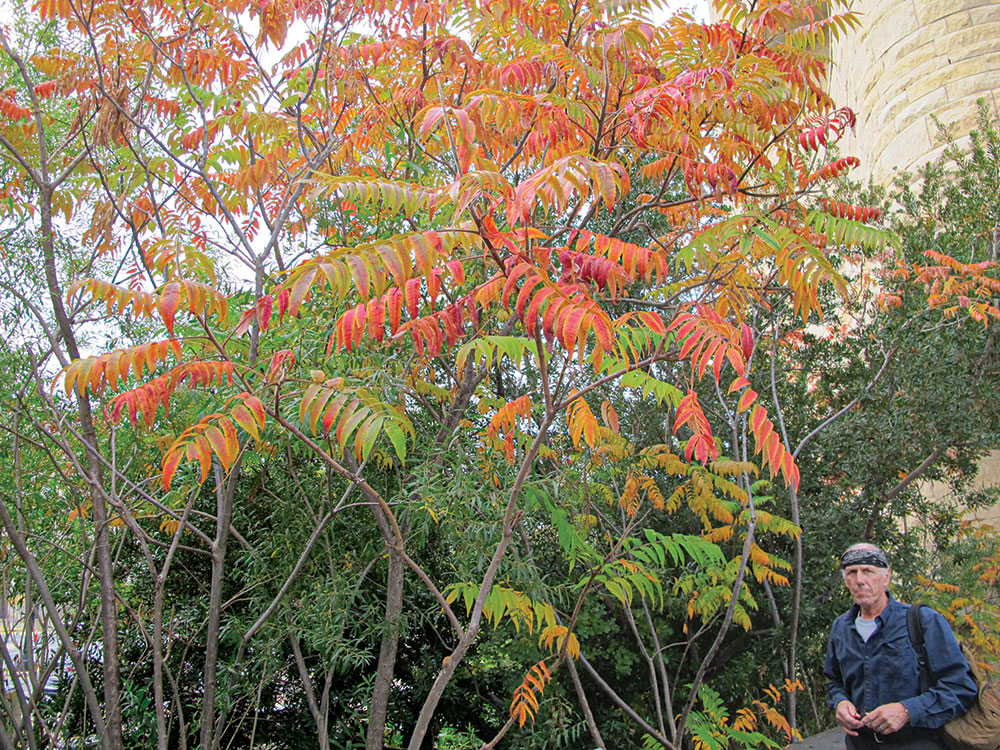
Staghorn sumac leaves are pinnately divided, with anywhere from 11 to 31 leaflets. The leaves are arranged opposite each other and are dark green above. The underside of the leaf is pale green and velvety. The margins of the leaflets are serrated.
The whole tree is very conspicuous in the fall as its leaves start to turn yellow or red. The bark is smooth and covered in a velvety hair.
WHERE FOUND
This small tree is found widely throughout the eastern portion of the United States, although it can sometimes (but rarely) be found in the West. It’s common around farm properties and fields, in mountainous areas and even in urban areas. I’ve seen it only once in the wild in California, but I saw it everywhere when I lived in Ohio—on the edges of most farms, along the roads and in town. I saw it growing in Appalachia and on the Mall in Washington, D.C.
PRIMARY USE
When I lived on my grandfather’s farm, staghorn sumac bushes were somewhat common throughout the “back 40.” The smooth sumac was also common in the countryside. The fruits were conspicuous, and you wouldn’t confuse them with anything else.
My brother and I had read one of Euell Gibbons’ books, in which he talked about making “lemonade” from the red fruit clusters. Naturally, we were eager to try this recipe.
We first collected the red fruit clusters and gently rinsed them to remove any dirt. Then, I simmered them in warm water, strained out the water and let the clusters chill in the refrigerator. At that point in the process, the juice had a sugar content, but it was usually quite tart, so I sweetened it with honey.
There are other ways lemonade has been made from the fruit clusters, such as simply soaking the clusters in cold water, straining and then sweetening the water to taste. In areas where many of these bushes grow, you could have a good beverage source for at least part of the year.
OTHER USES
For those of you who enjoy an occasional smoke but don’t want to experience the harmful effects of tobacco, you might follow one of the practices of local Native Americans, who smoked staghorn sumac leaves. These leaves could be smoked alone but would usually be mixed with other smokable herbs and then smoked in a pipe.
In addition, some beekeepers use dried sumac bobs as a source of fuel for their smokers.
All parts of the staghorn sumac, except its roots, can be used as a dye and as a mordant (a chemical that fixes a dye in a substance by combining with the dye to form a permanent compound). Because the plant is rich in tannins, leaves and twigs can be added to other dye baths to improve light-fastness. The leaves can be harvested in the summer when they’re available, and the bark can be harvested year-round.
PROCESSING
The real key to getting a good beverage is collecting the seed heads at just the right time—too early, and they won’t have the right tartness; too late, and they’ll be dry and often full of bugs and spiders.
Nevertheless, when you’re harvesting the seeds, cut off the clusters and gently remove the seeds (small amounts of debris are really not a concern, because you’ll be straining the seeds from the liquid). If you plan to dry these for later use, dry them thoroughly and store them in good containers, adding a desiccant package.
WHEN TO HARVEST/AVAILABILITY
Staghorn sumacs flower from May to July, with their fruit maturing in late summer into the fall. I’ve observed the red seed clusters at ideal stages to harvest anytime between August and October, depending on the location and season.
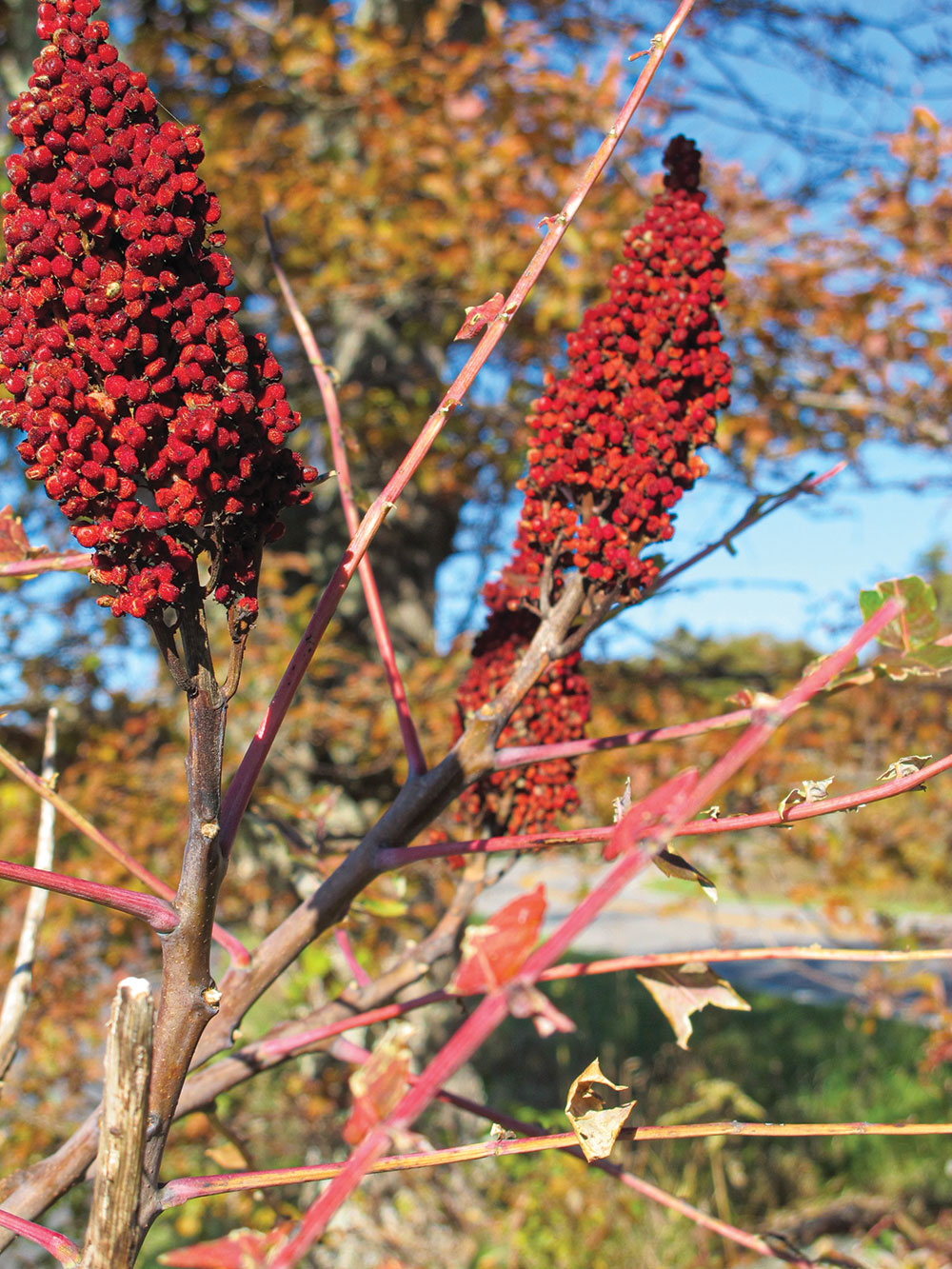
MEDICINE/NUTRITION
According to registered herbalist Michael Vertolli, writing in Vitality, “Staghorn sumac is an excellent herb for the treatment of inflammatory conditions of the urinary tract … It will reduce inflammation, promote tissue healing, and help reduce infection due to many kinds of bacteria as well as Candida albicans. Sumac helps to reduce prostate inflammation as well.”

He goes on to point out that sumac has general anti-inflammatory properties and is also beneficial in the treatment of rheumatic conditions, along with fever and respiratory infections. Sumac tea helps dry out the sinuses during colds and allergies.
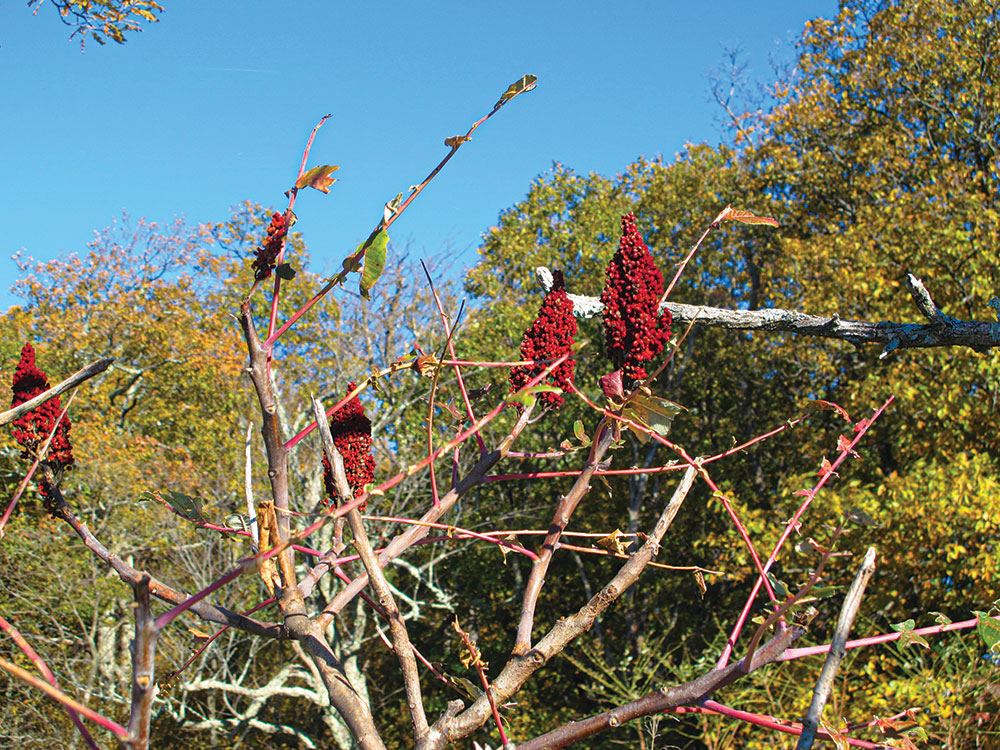
Additionally, Vertolli points out that the sumac drink is an excellent herb for the treatment of cardiovascular conditions by improving circulation and helping to lower blood pressure.
ADVICE FOR GROWING
Staghorn sumac plants are readily available from nurseries and online. If you live in an area suitable for staghorn sumac, be sure to plant them in a sunny area that offers good drainage. If you want to grow them from seed, place the seeds in a pot of water, bring the water to a boil and then turn off the heat. Remove them when the water is cool and plant them.
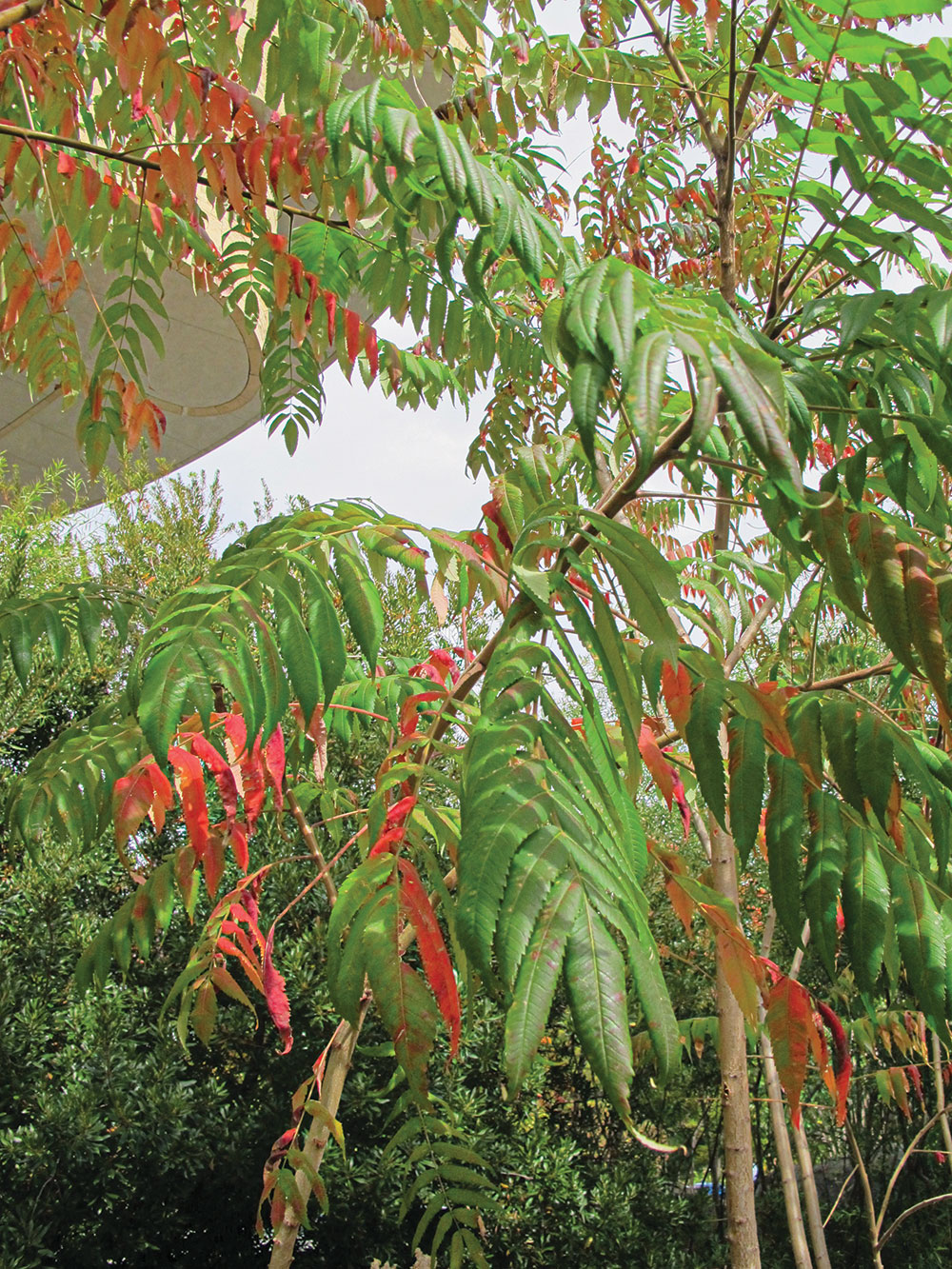
RECIPE
To make sumac tea, add two to three teaspoons of the fresh (or one to two teaspoons of the dried) fruits to boiled water and allow them to steep for 15 to 20 minutes. Sweeten to taste. Keep in mind that it’ll taste much stronger than when it’s prepared as a sun tea.
About AoG’s Plant Advisor
Christopher Nyerges has been teaching ethnobotany since 1974. He’s the author of Guide to Wild Foods and Useful Plants, Foraging Wild Edible Plants of North America and other books about the uses of wild plants. He can be reached at
www.SchoolofSelf-Reliance.com.
A version of this article first appeared in the February 2022 issue of American Outdoor Guide Boundless.

